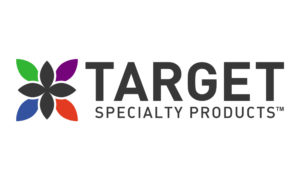Reduce mowing requirements with PGRs from Quali-Pro
Plant growth regulators (PGRs) have been around for decades, but a better understanding of how and when to use them is still evolving. PGRs are grouped into several different classes based on their mode of action. Two of these classes suppress growth by blocking the production of a plant hormone called gibberellic acid (GA). GA promotes plant cell division and elongation, so lower levels result in lower growth rates.
Quali-Pro T-NEX:
Trinexapac-ethyl has long been a trusted means of reducing mowing needs on virtually all grass types. It is a Class A PGR, meaning it blocks the GA pathway at the final stage of production. T-NEX is foliarly absorbed and suppresses vertical shoot growth, decreasing clippings by as much as 50% while improving color and density.

Quali-Pro Paclobutrazol:
Paclobutrazol is a Class B PGR, inhibiting GA production at the early stage of the pathway. It also differs from T-NEX in that it is absorbed by roots. Poa annua is more sensitive to Paclobutrazol than more desirable turf types, which can help give bentgrass a competitive advantage and reduce Poa populations over time.
Related: Poa Annua, Where is It?

Timing is Everything:
Extending control duration is not as simple as increasing rates, which may lead to unwanted discoloration and overregulation. Once inside the plant, the PGR breaks down faster at higher temperatures, making the longevity of suppression very weather dependent. Carefully timing follow-up applications using growing degree days (GDD) allows for steady, continued regulation and avoidance of “rebound growth” based on daily temperatures. This approach is still being developed and differs based on the PGR, turf species, and mow height. For bentgrass greens, multiple Paclobutrazol applications are applied based on a 300 GDD model, while T-NEX applications should be scheduled on a 200 GDD model. Fortunately, University of Nebraska-Lincoln’s free GreenKeeper app ( https://turf.unl.edu/ ) includes a PGR GDD tracker that takes these factors into account and can be used to design a program to fit your specific needs.
Always read any product label thoroughly before use, and for additional information, visit Quali-Pro.com or contact your Quali-Pro Area Manager.

























